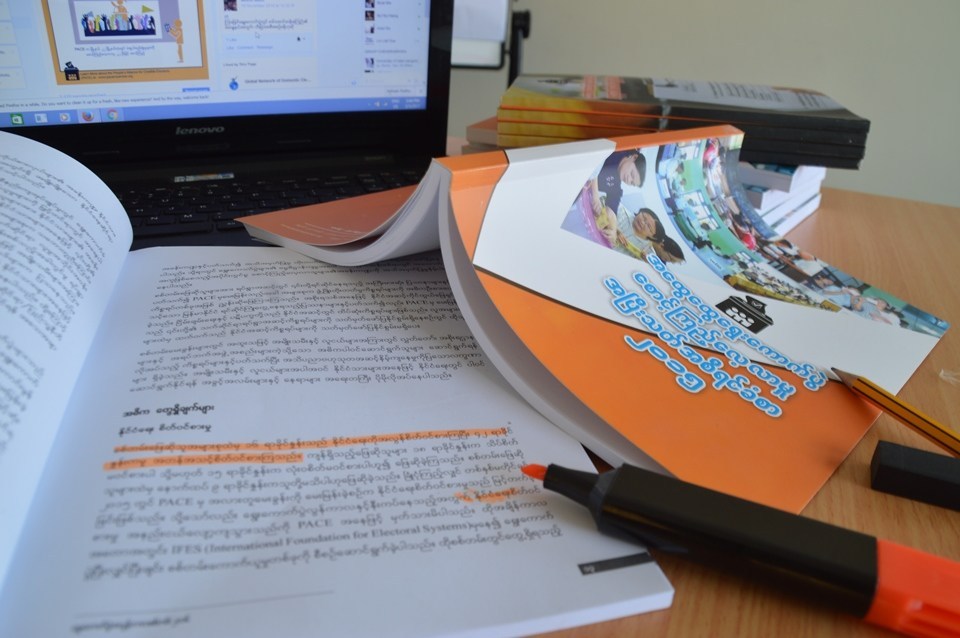2015 General Elections Observation Report

Overall, the elections were peaceful, competitive and open for voters to participate. Interest in the election appeared high with people across the country arriving early to wait in line on election day. The campaign environment was generally free of violence and intimidation, and candidates were able to reach potential voters to compete for their votes. For the most part, the elections were administered competently, but there were some inconsistencies in implementation of policies at the local level and last minute changes in the electoral timeline. Civil society, media and international organizations were able to actively engage in the election process as observers, voter educators and election watchers to a greater degree than previous elections. Although some complaints were filed, the outcome of the elections were generally accepted by the public and political parties. PACE’s specific findings include:
Legal and Administrative Framework
Certain provisions of the Constitution remain controversial and are central to public debate on the democratic progression of Myanmar.
The UEC is mandated by the Constitution and election law to conduct all aspects of the election, including to update the voter list, organize all parliamentary and state/region elections, oversee political parties, and resolve electoral disputes. This raises some questions as to ‘checks and balances’ in the election process.
Members of the UEC are appointed directly by the President through an unclear selection process. At lower levels of the UEC, the appointment of local election officials was not fully transparent. As a result, many political parties, civil society leaders and members of the public were skeptical about the independence and neutrality of the body.
The timeline for elections is not clearly defined and in practice, a detailed timeline was not clear until very late in the process. This proved challenging for political parties, civic education organizations and election observers to plan and implement activities.
Citizen Views of Elections
In the lead-up to the elections, PACE surveyed more than 4000 citizens and found that a large majority of the public intended to vote, although less than half said they were interested in politics. Generally, the public were supportive of the role of election observers and agreed with common factors used to measure the quality of the elections (such as secrecy of the ballot, accurate vote counts, and the freedom of parties to campaign).
Campaign Process and Environment
Generally, the campaign environment was peaceful and stable even though there were a few isolated incidents such as an attack on a candidate, and violations of campaign law and code of conduct.
The public showed a growing interest in the election, with the majority of voters interviewed by PACE saying they were interested in the campaign, had intention to vote and felt free to attend any campaign. Among those interviewed, migrant or low income workers showed the least amount of interest in the election.
The majority of the candidates PACE interviewed said that the sub-commissions were treating candidates equally and they were able to organize their campaign activities freely.
Regarding campaign tools, most candidates used traditional outreach like pamphlets, parades or rallies to reach voters. Very few candidates used IT technology, such as email or SMS to reach voters.
Rallies were mostly peaceful. However there were a few reports of inciting comments against other candidates or against religion, race or gender during the campaign by all types of parties.
Voter List Process
Generally, the voter list updating process was open to the voters to submit any changes to the list. Very few incidents of intimidation and interference were reported and the sub-commission officials were treating the voters equally.
Although the process was generally administered according to procedure, PACE observers found that some of the sub-commission members were not using proper forms to document as mentioned in the regulation, by-laws and manuals while the voters were requesting any change in the list.
Participation in the process appeared to be low with a small number of voters making changes in locations where PACE observed. Overall, the voter education activities, and the engagement of political parties and civil society were low where PACE observed.
The UEC’s timeline for the national display was confirmed only a few weeks before the nationwide display began. As a result, political parties and civil society faced difficulties in engaging the process in term of monitoring and delivering voter education.
Closer to election day, local sub-commissions in most places observed distributed “voter slips” to voters in their area. In the majority of locations observed, local stakeholders told PACE they had no problems in the process, though in some locations, stakeholders complained that the slips were not distributed to everyone, were distributed to the wrong person or were difficult to retrieve.
Advanced Voting
In recent Myanmar elections, advanced voting has been a widespread source of public suspicion in the election process. Specifically, the list of advanced voters, out-of-constituency advanced voting organized by institutions, and undue influence on advanced voters by local authorities or superiors were cited as common areas of concern
PACE and other accredited observers were not permitted to observe advance voting that occurred outside of a voters’ constituency arranged by institutions, like employers, educational facilities, Myanmar embassies abroad or military barracks.
PACE observers were able to observe votes cast by voters inside their constituency. In locations observed, most did not face serious problems in the process, although there were some isolated reports of forced advanced voting, impersonation of voters, ballots stored insecurely, and intimidation. Inside-constituency voting was most commonly used by the elderly, disabled voters, civil servants, election officials and sick voters. Military voters and detainees were also observed casting advance votes.
Election Observers and Media
For the first time, the UEC issued regulations which allowed the domestic and international groups to observe all aspects of the electoral process.
By election day, more than 12,000 domestic and international observers were accredited by the UEC or sub-commissions.
It was a positive that the UEC opened the electoral process to independent domestic, international groups, and media; however, several administration procedures and requirements made the process complex and timely for observer organizations, the UEC and sub-commissions.
Election Day
Generally, the election day was orderly and peaceful. Except for isolated cases of overcrowded urban polling stations, PACE observers were able to observe the process inside the polling station. Nearly all polling stations opened on time and, in most polling stations, officials followed the procedures. However, PACE observers reported that at some polling stations, advanced ballot boxes did not arrive before the opening.
Party agents were present at the majority of the polling stations. Inside and around polling stations, intimidation of voters was rare. However, there were reports about the presence of unauthorized persons at some polling stations. Although there were reports of small numbers of people being turned away from the polling stations because they were not on the list, this was not widely observed. In isolated cases, PACE observed a few people being allowed to cast votes even though their names were not on the list.
The closing and counting was open to observers and political parties, and conducted as instructed at majority of the polling stations. Party agents (especially from NLD and USDP) were present at the majority of polling stations. PACE observers reported that at some locations advanced votes were not counted according to the instructions.
Tabulation Process
In locations where PACE observed, the tabulation process was open to observation by observers, and candidate and party agents. However, observers had difficulty to verify that correct results were tabulated due to restrictions in access and the fact that results forms were not posted for public viewing. In most centers observed, measures were taken to secure and store sensitive materials, like ballots and results forms. Most observers reported that there was no interference, intimidation or harassment in the tabulation centers where they observed.
Complaints Process
Prior to the election, violations of the campaign code of conduct were settled through informal mediation committees. However, the role of the committees including Monitoring Committee for code of conduct (MCOM) to mediate the disputes did not appear very active during the pre-election and election period. For the future elections, the UEC should promote a more pragmatic mechanism to mediate the disputes before filing and the fees for filing complaint should be reviewed.
Following the election, PACE observed aspects of the result complaints system (however, PACE did not closely monitor each complaint hearing). On November 23, PACE was invited to observe the election dispute resolution workshop in Nay Pyi Taw where international standards for electoral dispute resolution in the Myanmar context was discussed. In total (45) cases were filed and, at the time this report was released, are currently being heard in Nay Pyi Taw (Later, one case was withdrawn). The court was open to the public and on January 12, PACE observers were allowed to observe the hearings in the UEC office. Overall, the court proceeding was open and transparent, however, PACE cannot comment on the validity of final judgments in each case.

